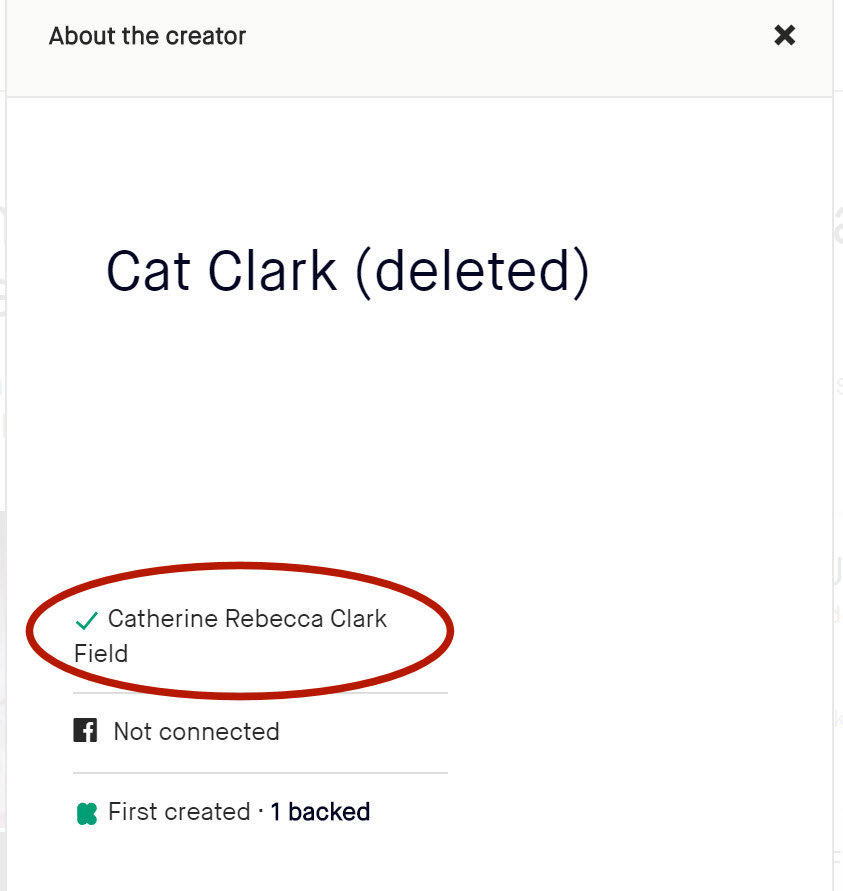A horrifically bad kickstarter campaign by ‘Cat Clark’, seeking $30k AUS, is now cancelled.
The BattBump kickstarter implied that it would be possible to transfer battery charge from one phone to another wirelessly, using Near Field Communication (NFC). A significant body of engineers will tell you this is not possible today, nor practical. Which begs the question, was this a deliberate attempt to scam people of their money? I don’t know the answer to that.
There are plenty of bad Kickstarters, but it seems the owner of this one decided to delete references to it and their association with it, after it was discussed at an engineering forum (eevblog.com). There is more information here too.
Here is what the page currently looks like:
I think if people dare to deliberately put out bad kickstarters then they should be held to account. There have been far too many circumstances where kickstarters were not vetted correctly by engineers, and people have lost money. It gives our engineering profession a bad name.
It is also particularly unfair to tech journalists who report on it, and then the content is flagged to YouTube for privacy concerns, when public information that was on the Kickstarter page is mentioned. It is what happened to Dave Jones at EEVBLOG.

Anyway, the BattBump Kickstarter author was ‘Cat Clark’ who stated she was from Sydney (and stated she was originally from the UK), and worked as a ‘series producer’ for some show on Channel 9, and that he/she had done work for clients like Samsung and Vodafone and other mobile phone giants.
The Kickstarter page specifies the name as Catherine Rebecca Clark Field, and the photo of the person was linked from the Kickstarter page (now deleted). I have heavily cropped the photo, reduced the resolution and blurred it but here it is. I believe it is important so that other ‘Cat Clark’s are not implicated. For the avoidance of doubt, the Kickstarter page linked to a page which carried this photo (at higher resolution, uncropped, and unblurred). If the same ‘Cat Clark’ tries to produce another crowdfunded project in future, then the information and blurred photo could be useful to identify if there is a risk of it being another bad crowdfunded project.
In summary, there is compelling reason under fair use rules for retaining this cropped and blurred and reduced resolution copy of the photo which was on a public web page, along with all the other information here. I have retained screenshots as evidence that the information was publicly available.
And why was the Kickstarter bad? Simply, it suggested that NFC technology could be used to transfer mobile phone battery charge from one device to another. NFC as implemented in phones today cannot do this. For more information, please refer to the discussions on engineering forums where it has been discussed.
At some point, the Kickstarter page content changed like this (snippet from EEVBLOG):
In summary, the Kickstarter would have waited for the technology to be developed, for manufacturers of phones to decide that it is important enough to include in mobile phones (and this wait could be an indefinite amount of time – if at all!) and then the “mobile app” that the Kickstarter would develop could be used!
The Kickstarter was seeking $30K AUSD for developing a near-useless app until as such time as manufacturers decided to implement some hardware feature in mobile phones to allow NFC to charge phones (the NFC standard does not provide for this today – it would take hours to even charge a phone battery by a few percent, if the hardware was modified to do this today – and no phone does this today).
Frankly I’m tired of seeing the reputation of the engineering profession being dragged through the mud each time a technology kickstarter fails, and then seeing our tech journalists suppressed in reporting aspects of it that by all rights are in the public interest.
It is time we stood up and made it clear that we do _not_ approve of these bad kickstarter campaigns. If the owner of the kickstarter wishes to see the information removed, then I think an equally public statement (as equally public as the Kickstarter campaign) should be produced specifying that no right-thinking engineer was consulted during the preparation of the campaign. I think that’s fair.


